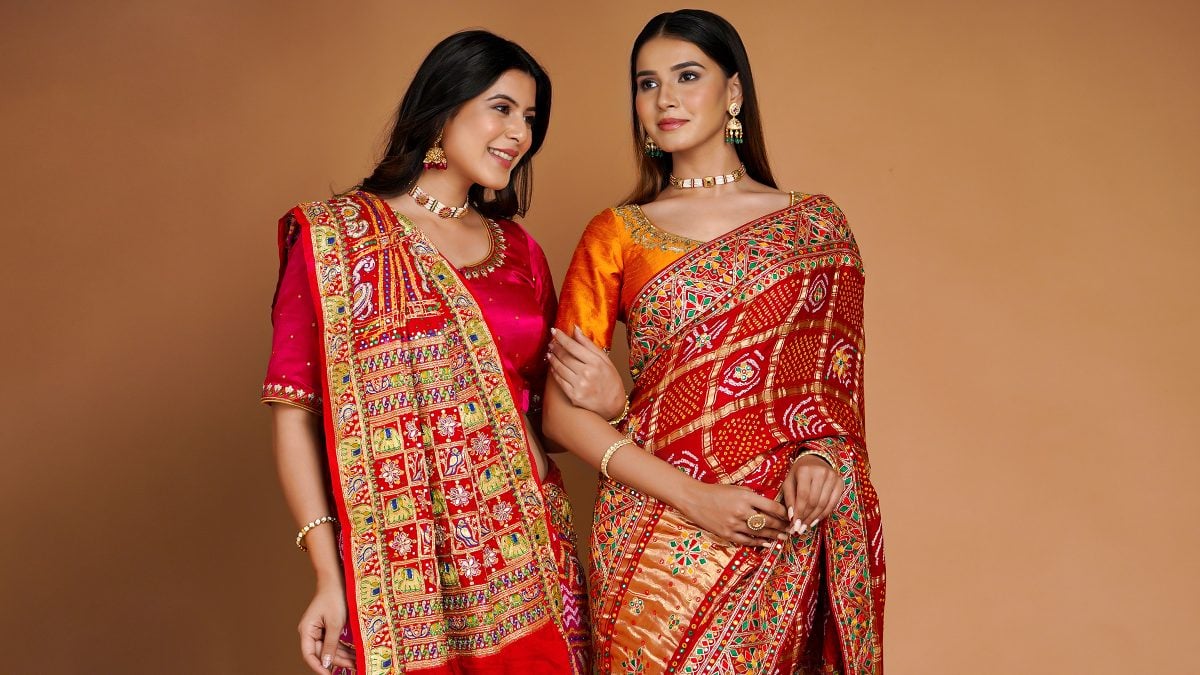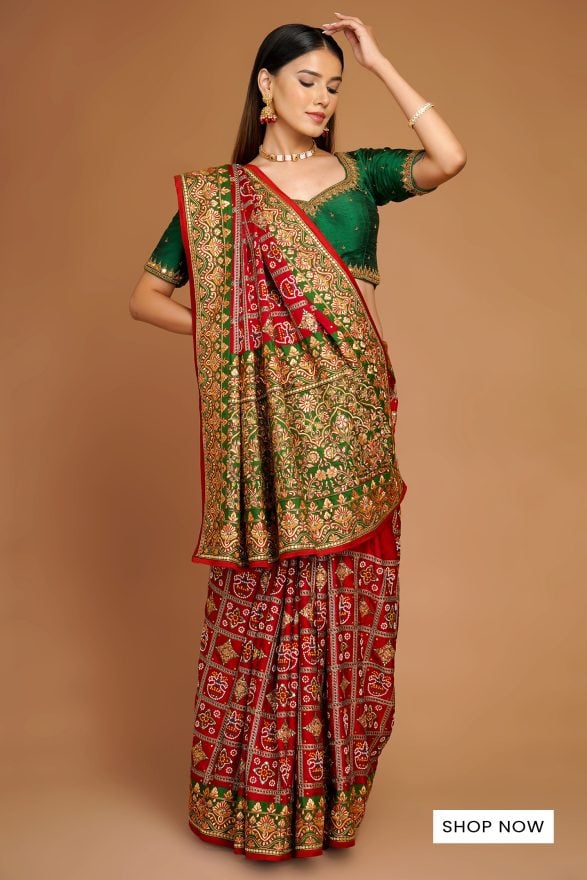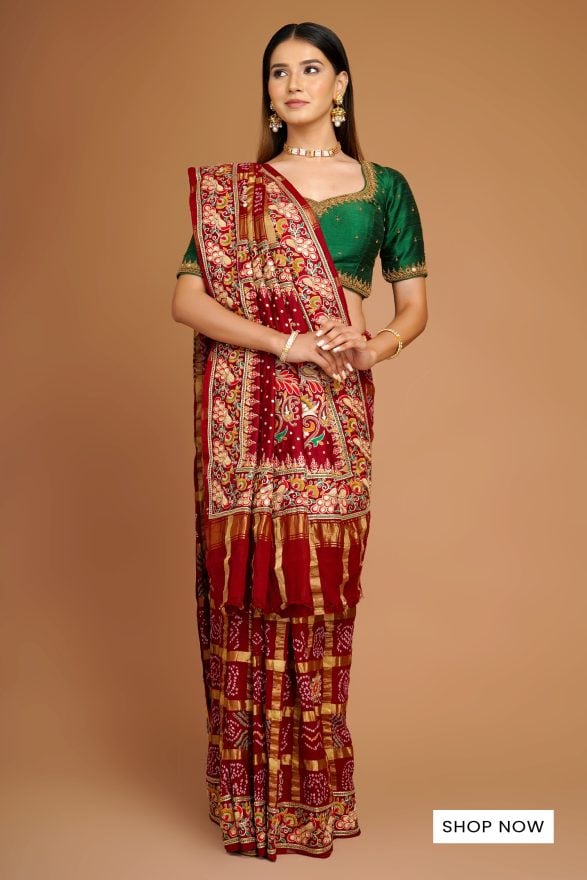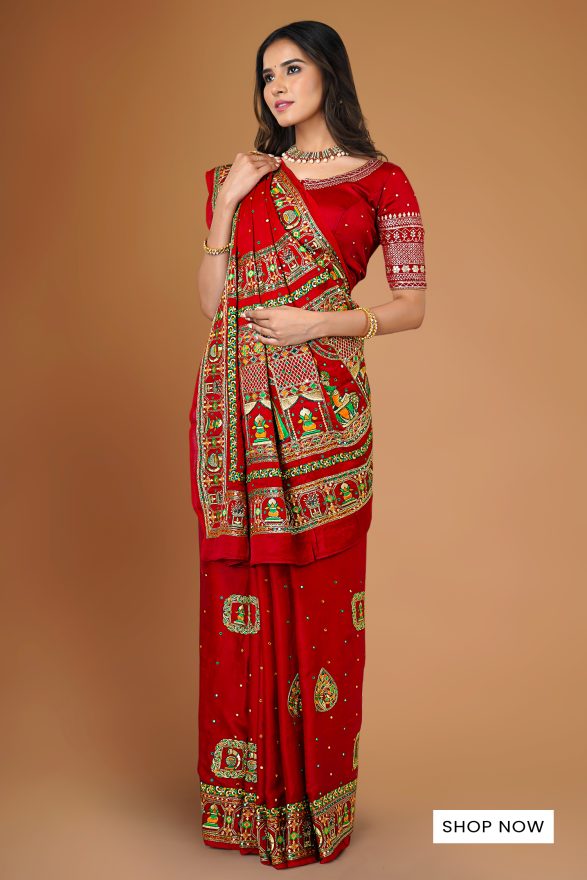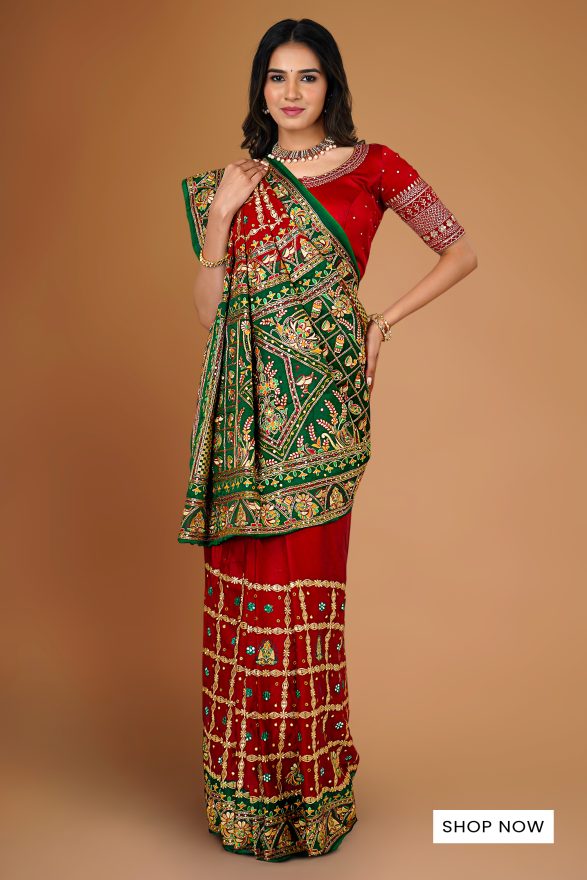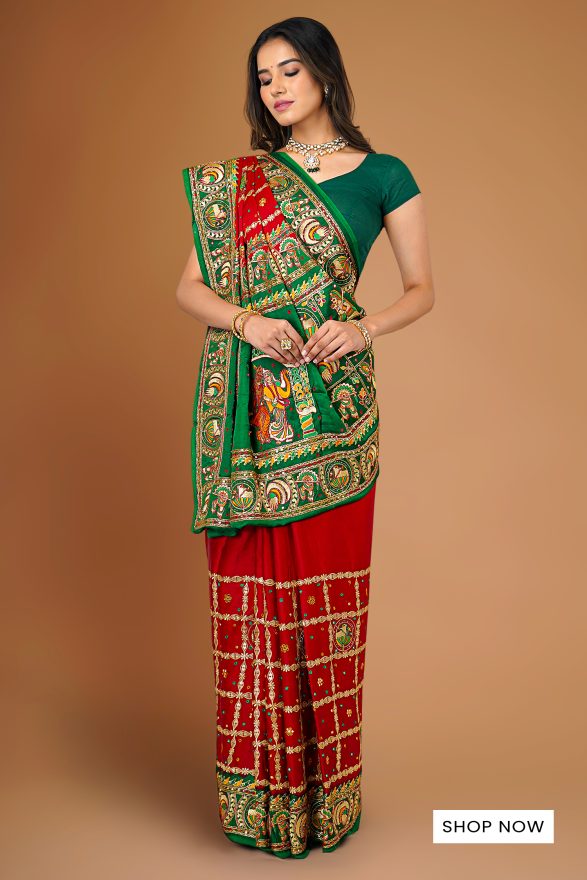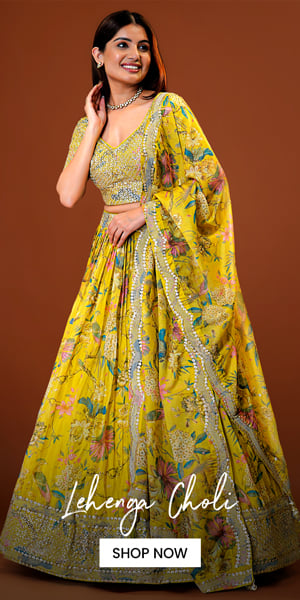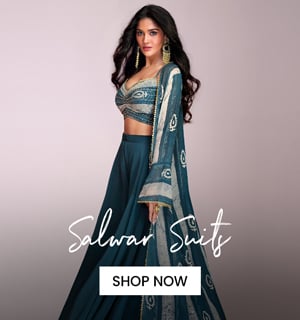Let that legacy be carried forward! India which is a deep-rooted collectivistic nation is known for carrying forward its value systems and cultural lifestyle norms beyond generations and that includes clothing. In the regions of Gujarat and Rajasthan, is a wedding tradition followed since centuries, where the bride enters her new house in a checkered and luxuriously ornate sari. This traditional drape is called a Gharchola and is till date an important part of bridal attire. The term ‘Gharchola’ literally means ‘home attire’. As a Hindu and Jain cultural norm, this saree is gifted by the mother-in-law to her new daughter-in-law for wearing during the wedding rituals.
Specialty of a Gharchola Saree
An authentic gharchola saree is made with Venkatgiri cotton which has a lustrous surface, similar to that of silk. Gaji silk is also a popular fabric used in making these artistic drapes. The length of the saree is divided into grids and each grid is coloured in a way similar to the Bandhani tie-and-dye technique. It is woven with real gold or copper zari threads and is therefore very high priced. Handwork like thread embroidery, cutdana, diamonds, beads and stones are used to adorn the garment further, making it appealing as a bridal saree. Given the auspicious element attached, shades of red, maroon, green and sometimes yellow form the main colour palette of these drapes. The grid or chequered pattern is a distinguishing characteristic of Gharchola sarees. The saree is usually divided into 9, 12 or 52 squares, where the 12 grid is called as ‘baar bhag’ while the 52 square variant is called ‘bavan bhag’.
Modern Adaptations
With time, every culture undergoes modifications to keep up with the changing lifestyles of people. Traditionally a Gharchola saree was draped by the bride over the head while nowadays it is worn as a regular Gujarati pallu drape. The manufacturing process of Gharchola has also been adapted to suit budget preferences of modern brides who opt for practical and economically priced wedding-wear rather than overspending on a single outfit which will probably never be worn again. Hence these days Gharchola saris are also made on power looms using Gaji silk as a base, while the nature-inspired Bandhani motifs are added in the form of digital prints. Plastic zari is used to further bring down the cost of the saree thus making it an affordable drape for brides.
Beyond Weddings
With such beautiful intricacies, this typical bridal attire had to invade the segment of casual wear sarees and contemporary drapes too! Gharchola prints are now also used to make trendy designer sarees in bright hues.
The Red and Green Colour Code
Although the manufacturing as well as the draping style of Gharchola sarees has undergone noticeable changes, shades of auspicious red and green colour have still not been replaced by contemporary hues like pastels for bridal wear. Gharchola saris, with their age-old details have managed to be a part of wedding attire even for modern and globally located brides. The legacy of these intricacies like auspicious colours, Bandhani motifs and precise grids with golden borders that reflect the deep-rooted Indian culture impart an eternal charm to these sarees and are surely here to stay in the coming decades!


